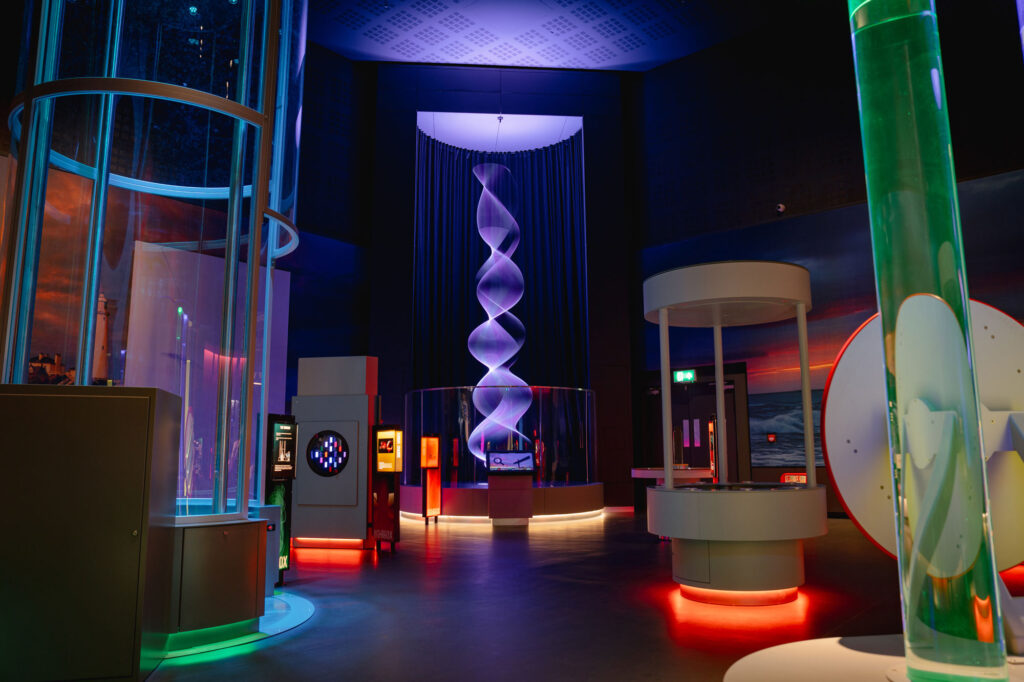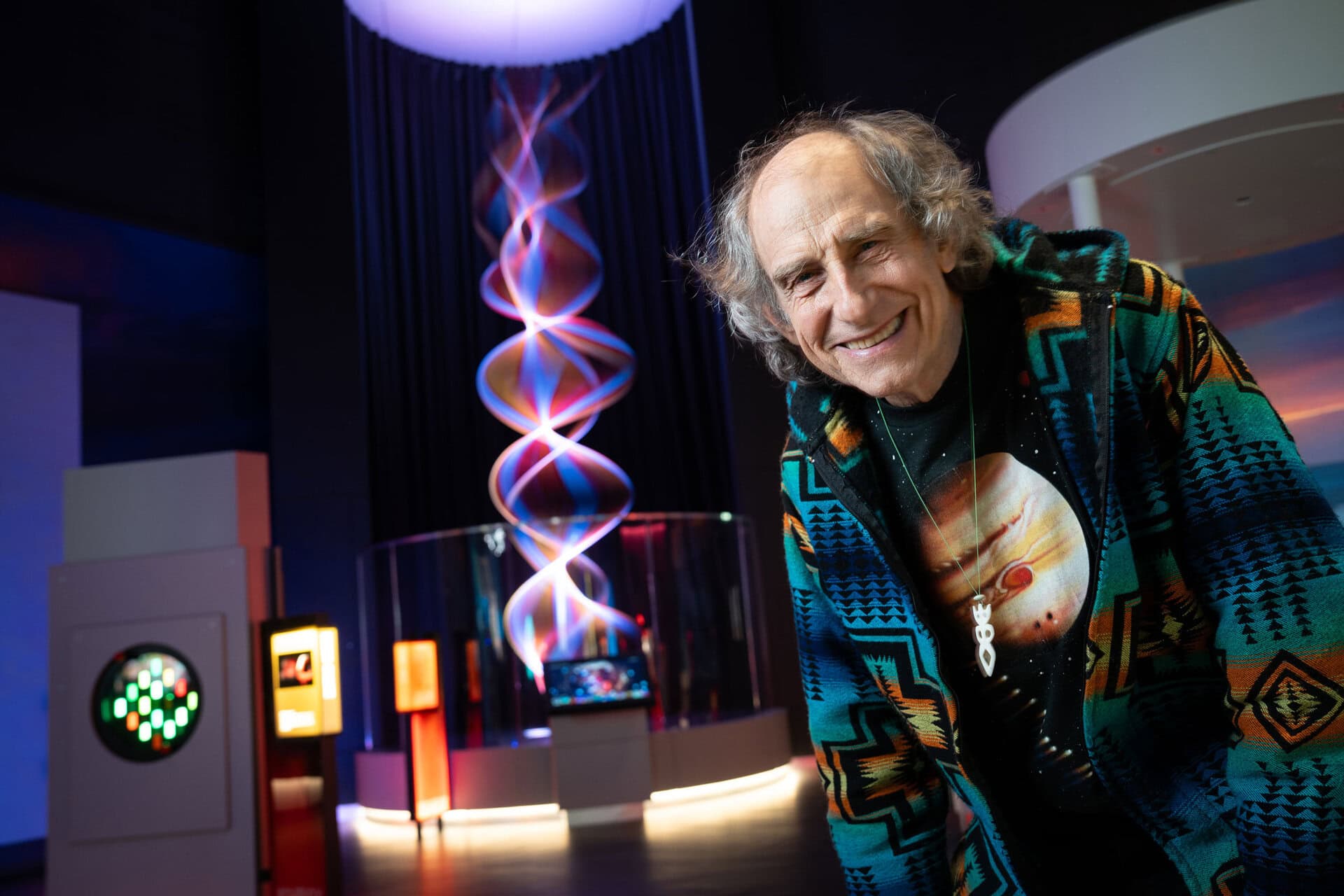
Life Science Centre in Newcastle marked its 25th birthday with a major £1.5 million investment in an innovative new exhibition exploring light, colour and sound.
Lightbox, unveiled on 24 May, is the culmination of two years development and features 14 hands-on interactive exhibits created by internationally recognised artists and specialists.
At the heart of the exhibition is a striking 8-metre-high moving string sculpture ‘String Wave’ created by kinetic artist Paul Friedlander, whose work has been displayed in more than 20 countries and on four continents.
Paul first trained as a physicist before following his fascination for art.
In the 1980s, Paul made an important discovery of the chaotic properties of spinning string and is credited with inventing the technique of chromastrobic light – “light that changes colour faster than the human eye can see”.
This has gone on to influence many of his works since, including String Wave, which is Paul’s largest permanent installation.
Here Paul talks about his inspiration, his love for kinetic art and his new String Wave installation.

You have traditional science background with a bachelor’s degree in physics – what led to the transition to art?
My father was a mathematician and my mother an artist and my parents influence certainly played an important part. But it was a single day in 1970, on a visit to the new Hayward Gallery that I had my epiphany.
The Kinetics show I found so inspiring – I knew there and then what I wanted to do with my life. At the time I was midway through my undergraduate career. I did not drop out, but I started to work with equal, if not even greater effort, on my newfound passion.
Do you think there are links between science and art and do you use your scientific knowledge to inform your art?
There is a link in the sense that artists and scientists are both driven by interests that lie beyond the quotidian world of a need to make a living. They are, in a sense, all idealists.
However we should not imagine they are the same. I have transitioned to an artist, and while my scientific knowledge has proven very useful to me, I now use it in pursuit of another goal. There is an element of the inventor in me too, and this job title perhaps comes closest to spanning the world of art and science.
Do you think your career illustrates the breadth of career opportunities available from engaging with STEM?
Undoubtedly yes, however one should not lose sight of the art part. Without having an interest in art in the first place, I would never have been drawn to this field. A rounded education remains important, we all need a taste of everything when we are growing, otherwise we would never know what we are missing.
Where do you draw inspiration from? What inspires you?
Nature, phenomena, light, movement. While a scientist might seek to understand more deeply for the sake of knowledge alone, I take inspiration to create with a certain fusion of rational analytic, and intuitive emotional response to those sometimes quite abstract things around me.
It could be almost anywhere, but typically not made by humans – patterns in the clouds, a sandy beach at low tide where the waves have left ripple marks. All that one might easily ignore, unless you quiet yourself and tune into them.
Where did your interest in kinetic art come from?
Even before the Hayward Kinetics show I had become aware of kinetics and also optical art through a series of visits to exhibitions in a marvellous little gallery run by the Arts Council in Cambridge, which my mother would take me to ever since I was a small child.
How many countries has your work been displayed in?
I have lost count, a little more than 20 last time I checked.
How did you approach the installation for Lightbox at Life?
Two things were uppermost in my mind – the sheer scale of the space and the opportunity to go very high, and the importance of tailoring the interactive interface to an audience, many of whom, will be quite small children.
Were there any major hurdles, challenges when developing this installation?
Mostly the size. In the end I rebuilt the motor driver system three times before I was satisfied it was good enough for the job.
Was it important to you to have a permanent installation in the UK and why?
Definitely yes, and while it could have been in any major city, having been born in the north, it feels appropriate to be in Newcastle.
Did the fact that the installation was going to be within a science centre have any significance?
Yes and no. Ultimately I would be happy for any major institution to welcome my work. This belief comes from wanting to build connections between art and science.
It is good to be at Life, but while my art shows us something both about our visual perception and how I have found ways to make the persistence of vision central to way we see the waves, ultimately this not a demonstration of waves and how our eyes perceive rapid motion, it is an inspiration. Best compared perhaps with music without words, something visceral and ultimately mysterious.
Do you see it as legacy piece?
I would very much hope so. I would like to believe that the Life Science Centre will persist far into the future and my String Wave will be a continuing part of Life’s permanent collection.
